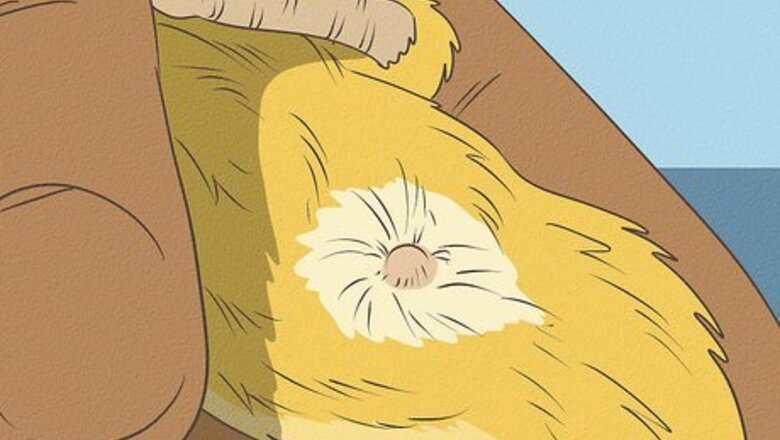
views
X
Research source
Encouraging Your Canary to Sing

Ensure you have a male canary. Identifying the sex of a canary is challenging, as males and females have very similar appearances. While singing likely indicates a male, this will not be apparent at birth. Check the cloaca area, or the area just in front of the underside of the bird's tail feathers. Blow on the area to improve visibility. If there is a bump in this area, the bird is likely a male. If you don’t have a canary yet and you want to make sure you get one that sings, you can always wait for proof. You can get canaries from breeders who will know which of their birds love to sing. Similarly, visit pet stores until you hear a bird sing for yourself! Female canaries also sing, though their song is much simpler and less expressive than that of a male canary.

Play recordings of canaries singing. In the wild, male canaries learn to sing by hearing other canaries sing. They will also emulate other songbirds or similar noises. Many of the tunes that a male canary hears will affect the development of their own personal song. You can even teach your canary to make video-game-like noises by playing recordings of these sounds. Most often, your canary will sing the songs it believes are most likely to attract a mate. Once a canary is sexually mature at around 6 months of age, they will likely begin to stick to traditional canary songs.
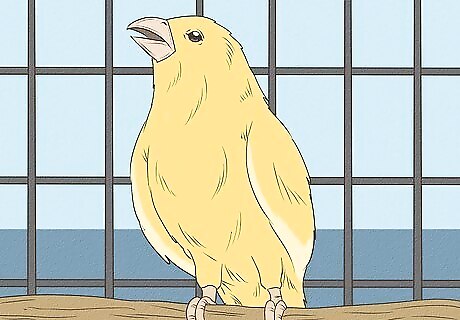
Keep the lady canaries out of sight. Males sing for one reason: attracting a female canary. If you keep a male and female canary together, the male won’t be searching for a mate, and will not sing. That said, a male canary may be more likely to sing if a female canary is close enough to him to hear the noises she makes. For instance, if you keep a female canary in another room, your male canary won’t be able to help himself from singing non-stop, especially during the mating season.
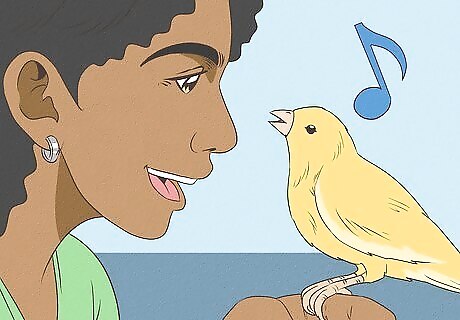
Talk and sing to your canary. Speaking to your canary in a soft, soothing voice will also provide him with motivation to sing. Similarly, softly singing to him may goad him into outdoing you with his vastly superior singing abilities. Further, the emotional stress caused by loneliness may keep some canaries from singing. Your company may provide him with comfort.
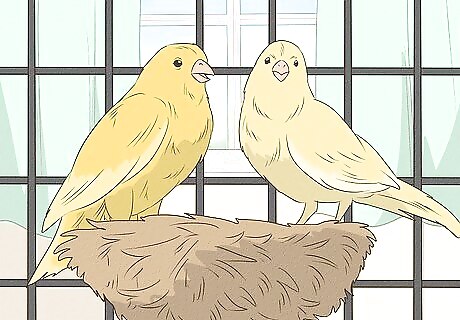
Jump start a canary’s mating season. In the wild, canaries’ mating season is determined by seasonal changes in daylight and temperature. If you keep your canary indoors, you’ll need to control the amount of light and the temperature of the room. This will keep your canary healthy, as well as affect when he is most likely to sing. Your canary will start thinking about breeding if you slowly increase the amount of light they’re receiving. Meanwhile, keep the room they are kept in between 65 °F (18 °C) and 75 °F (24 °C). Depending on where you live, natural light can likely be utilized most of the time. You can have lights turn on before sunrise and stay on until the room is naturally lit, or cover a cage early in the evening if there is too much natural light. Use a timer to help control the amount of light your canary gets. For instance, set a timer to turn lights on near your canary’s cage and run for 12 hours. Each week, increase the amount of time you leave the lights on by 30 minutes, either by having the lights turn on earlier or run longer. Stop increasing the amount of light at 14 hours. Canaries will begin to molt as the “days” reach 15 hours, concluding their breeding season.
Keeping Your Canary Happy
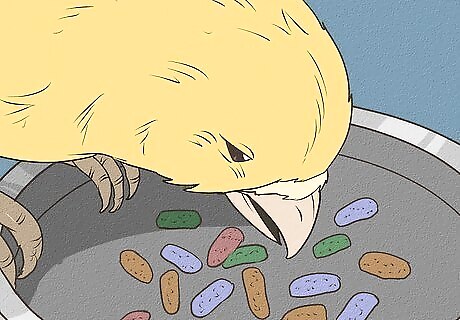
Feed your bird well! While bird seed will likely be your bird’s main diet, seeds do not offer all of the nutrients your bird needs. Make sure to balance your bird’s diet with either canary-specific pellets or “egg food.” Both of these can be found at your local pet store or online. Supplement your canary’s diet even further with finely chopped leafy greens, vegetables, fruit, and grain. Include Vitamin A in your canary’s diet to help bring out the color of their feathers. Carrots and sweet potato are great options to provide this nutrient to your bird. Provide two separate food bowls. Place seeds and pellets in one bowl and fresh fruits and veggies in the other. Do not be fooled by fortified seeds. Though additional nutrients have been added to the exterior of seed, your canary may leave this fortified hull behind, eating only the contents inside. Avoid feeding your canary anything sugary or fried, as well as avocado. Take any food out of the cage that is not eaten within 24 hours.
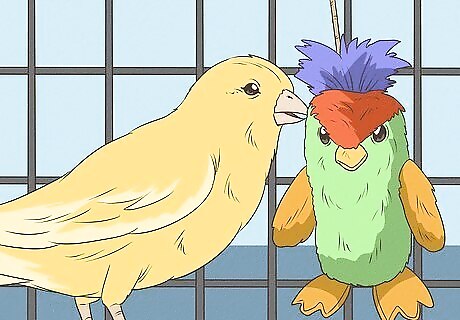
Provide ample entertainment options. Aside from nutritional sustenance, your canary also needs mental and physical stimulation. Play and exercise are necessary to maintain health, as well as contentment. Meanwhile, boredom may contribute to negatively effect your bird's mood, which may keep them from singing. Keeping multiple male canaries together will keep them entertained, but may lead to fighting. Toys and perches are additional options to keep a canary active. Hang strips of leather or sturdy string for your bird to play with. Mount perches made of various different materials at different locations in the cage. Include at least three different types, as perches of different thicknesses help prevent foot injuries.
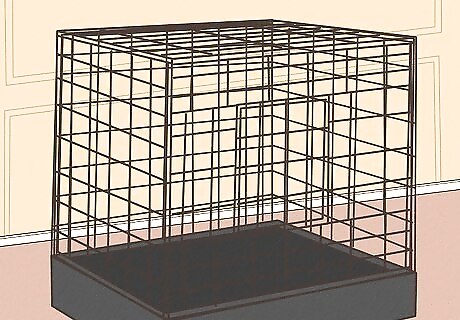
Ensure a comfortable cage. Temperature is extremely important to your canary. Fortunately, normal room temperature is perfect. Make sure the temperature never exceeds 78 °F (26 °C). If you only have one canary, house it in a cage that’s at least 18 inches wide, 18 inches tall, and 18 inches long. For two birds, choose a cage that’s at least 24x18x18 inches. The bigger the better, and additional horizontal space is better than additional vertical space. (Note: 1 in. = 2.54 cm) Make sure the space between the bars of the cage are less than 3/8 inch. Place the cage in your living room, or whichever room is most often occupied during the day. Do not place the cage in the kitchen. Position the cage with one side against a wall, and in a place that receives only a bit of direct sunlight, if any. Consider covering the cage at night to help your canary rest.

Keep your canary clean. Canaries enjoy grooming and depend on good hygiene to stay healthy. Use a water spray bottle with room temperature water to mist your canary a few times a week. Further, provide a bowl with 2 to 3 inches of water in it so your canary can wash itself. Remove and replace the water after a bath, which will likely occur about twice per week. Aim the spray above the bird so that mist descends onto the bird like rain. Do not spray a canary directly with a stream of water. If you bird does not clean itself, take it to the vet. Ensure that there are no drafts that reach your bird’s cage. Drafts can cause a bird to become dangerously cold while they are wet.
Identifying Why Your Canary Won’t Sing
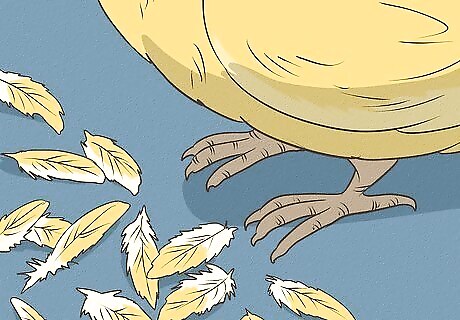
Check to see if the bird is molting. Your canary will not sing while it is molting, and may not sing during non-mating seasons as well. Often, this means your bird is less likely to sing during the summer and the winter. However, if a bird suddenly stops singing without an apparent change of temperate or lighting, take it to a vet.

Talk to an avian veterinarian. If you know you have a male canary and it simply does not sing, this does not necessarily mean anything is wrong with it. For help diagnosing reasons it may not be singing, see a vet that specializes in taking care of birds. You should take your bird in for an annual check-up even if nothing seems wrong. Talk to a vet then about any curiosities you have about their singing behavior.
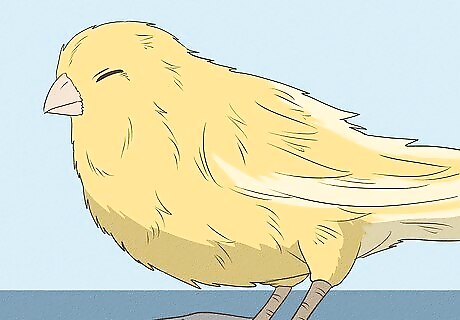
Look for signs of illness. There are certain signs you should watch out for. These may affect singing, but may also pose a serious danger to your canary. Watch out for permanently fluffed feathers, missing feathers, or incessant plucking. Also be on the look out for any swelling, unusual marks, discharges, or wheezing and coughing. Further, see a vet if your bird stays low in their cage, stops eating, or holds either foot or wing in odd positions.


















Comments
0 comment